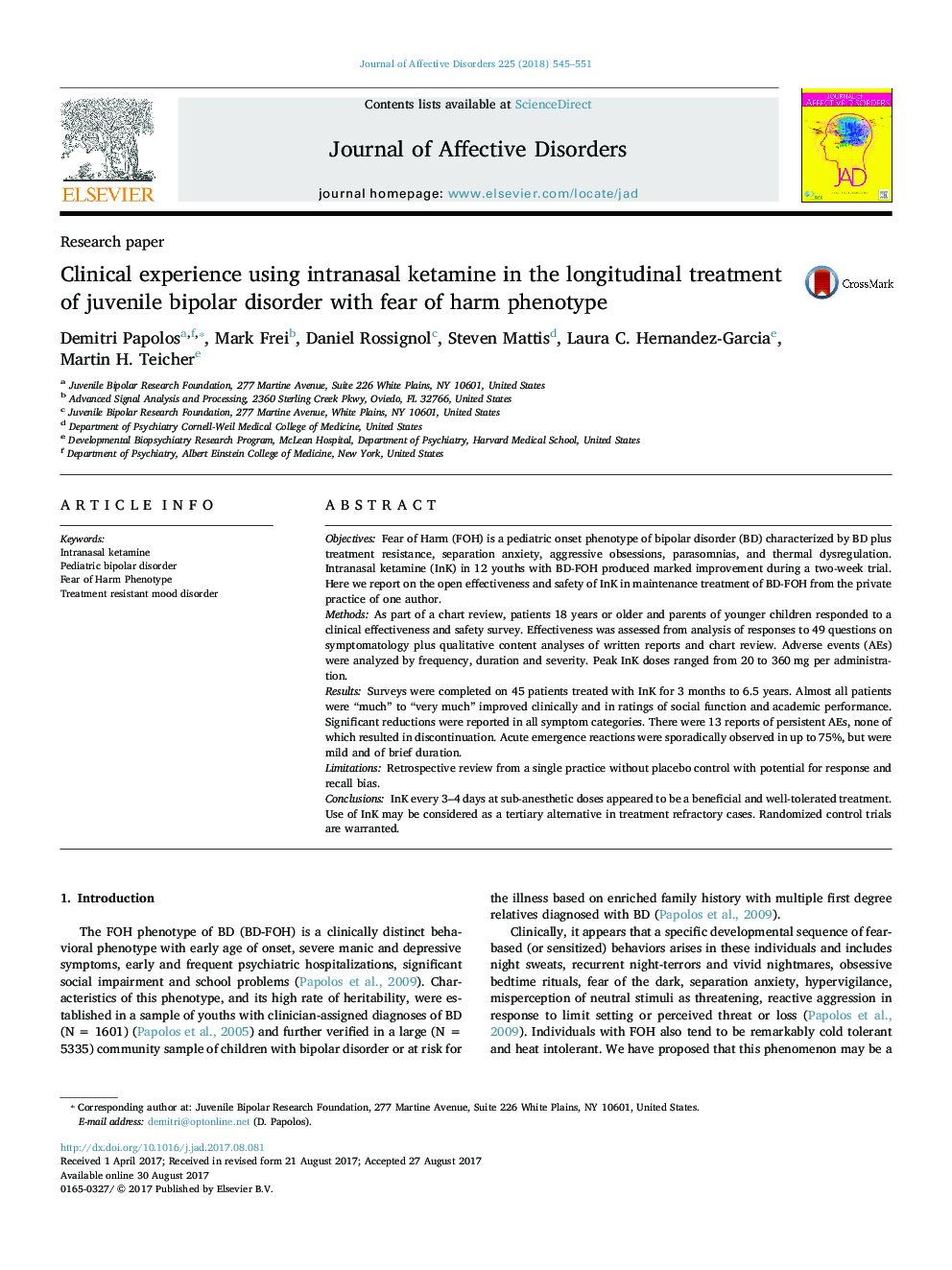| کد مقاله | کد نشریه | سال انتشار | مقاله انگلیسی | نسخه تمام متن |
|---|---|---|---|---|
| 5721757 | 1608100 | 2018 | 7 صفحه PDF | دانلود رایگان |
- Ketamine every 2-5 days had sustained benefits in the fear of harm bipolar phenotype.
- Treatment resistant patients receiving ketamine had marked reduction in CGI scores.
- Intranasal ketamine administration every few days was tolerable for months to years.
- Most adverse events were time limited and persisted for 15-120Â min.
- Intensity of most adverse events decreased over time without loss of benefits.
ObjectivesFear of Harm (FOH) is a pediatric onset phenotype of bipolar disorder (BD) characterized by BD plus treatment resistance, separation anxiety, aggressive obsessions, parasomnias, and thermal dysregulation. Intranasal ketamine (InK) in 12 youths with BD-FOH produced marked improvement during a two-week trial. Here we report on the open effectiveness and safety of InK in maintenance treatment of BD-FOH from the private practice of one author.MethodsAs part of a chart review, patients 18 years or older and parents of younger children responded to a clinical effectiveness and safety survey. Effectiveness was assessed from analysis of responses to 49 questions on symptomatology plus qualitative content analyses of written reports and chart review. Adverse events (AEs) were analyzed by frequency, duration and severity. Peak InK doses ranged from 20 to 360Â mg per administration.ResultsSurveys were completed on 45 patients treated with InK for 3 months to 6.5 years. Almost all patients were “much” to “very much” improved clinically and in ratings of social function and academic performance. Significant reductions were reported in all symptom categories. There were 13 reports of persistent AEs, none of which resulted in discontinuation. Acute emergence reactions were sporadically observed in up to 75%, but were mild and of brief duration.LimitationsRetrospective review from a single practice without placebo control with potential for response and recall bias.ConclusionsInK every 3-4 days at sub-anesthetic doses appeared to be a beneficial and well-tolerated treatment. Use of InK may be considered as a tertiary alternative in treatment refractory cases. Randomized control trials are warranted.
Journal: Journal of Affective Disorders - Volume 225, 1 January 2018, Pages 545-551
